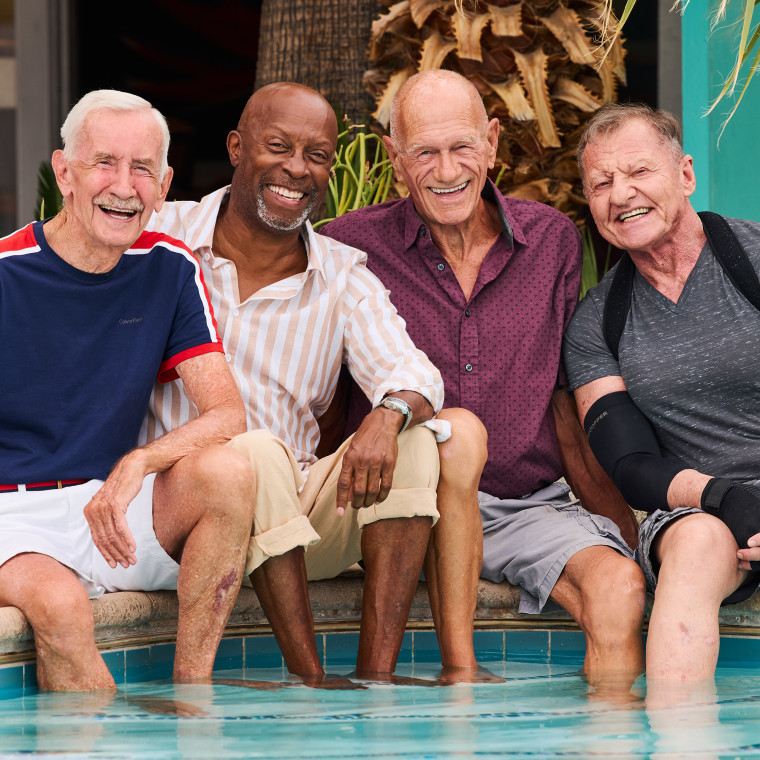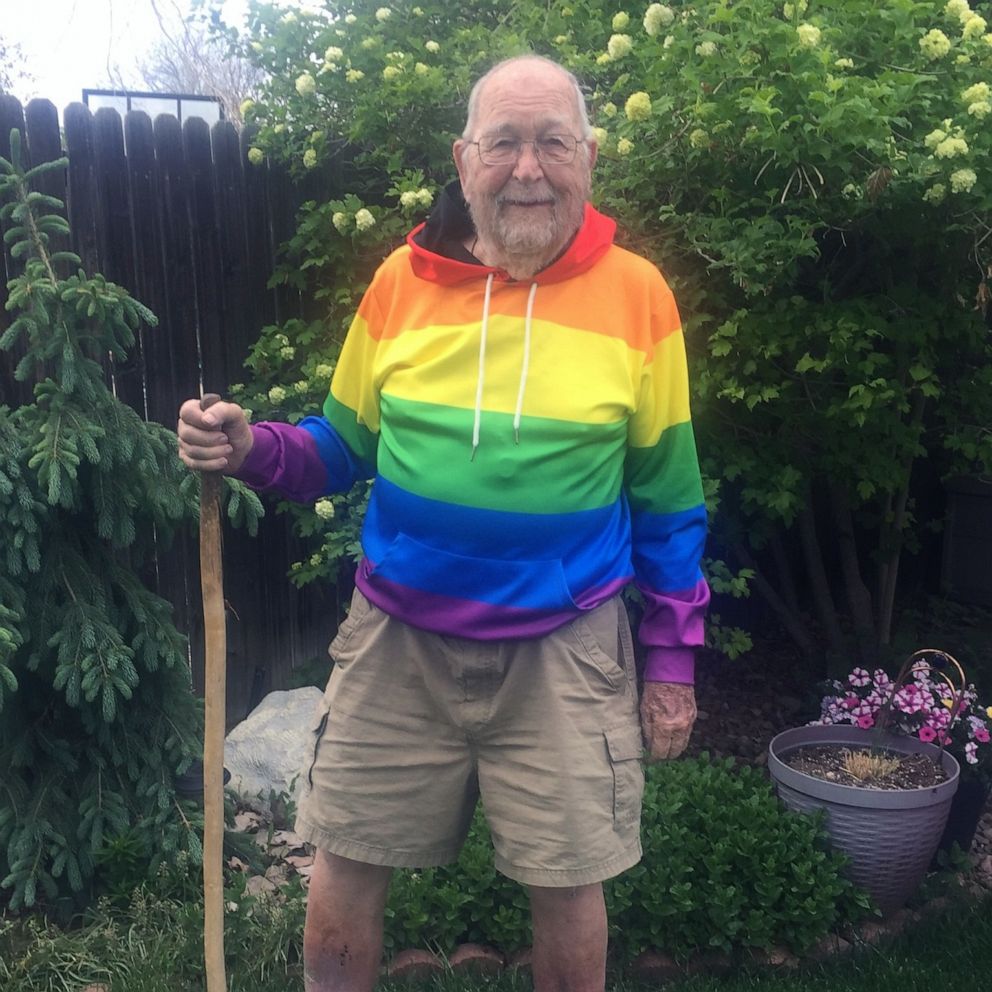Exploring Sexuality & Aging: A Look At Gay Men & Relationships
Does the exploration of one's sexuality and desires, particularly as one ages, truly have an expiration date? It's a journey that unfolds throughout life, and the quest for understanding, acceptance, and fulfillment is a universal human experience, regardless of age or orientation.
The landscape of human sexuality is undeniably diverse. Individuals navigate their desires, attractions, and identities in countless ways, and these experiences often evolve over time. One might find themselves drawn to the familiar comfort of their established preferences, while others venture into uncharted territories, driven by curiosity, exploration, or a deeper understanding of themselves.
The experiences shared by individuals, like the 17-year-old exploring their sexuality or the 47-year-old man embracing his bisexuality, highlight the spectrum of human experience. These narratives, though personal, shed light on broader societal trends and challenges, such as the stigma surrounding non-traditional relationships or the pressures faced by individuals as they age and their physical abilities change. The importance of self-acceptance and the courage to live authentically, regardless of societal expectations, cannot be overstated.
| Category | Details |
|---|---|
| Name | (Hypothetical) John Smith |
| Age | 47 |
| Sexual Orientation | Bisexual |
| Relationship Status | Single/Partnered |
| Career | (Hypothetical) Software Engineer/Artist |
| Professional Interests | LGBTQ+ Rights, Mental Health Awareness, Creative Expression |
| Personal Interests | Art, Music, Travel, Exploring Relationships |
| Website (Reference) | Bisexual Awareness |
It's a realm where societal norms are constantly challenged. The notion of an "ideal" body, the pressure to conform to heterosexual standards, and the fear of judgment can all play a role in shaping our perceptions of ourselves and others. However, the stories shared by individuals, often anonymous, highlight the complexities of these issues. The exploration of sexual interests through masturbation, for example, is a common practice that carries physical and mental benefits for men of all ages.
The exploration of identity extends beyond sexual orientation. Consider the experiences of those navigating their gender identity, or the challenges faced by older adults as they negotiate changing physical capabilities and social expectations. It's a journey that requires self-reflection, resilience, and a willingness to embrace the fullness of one's being.
Discussions around aging frequently involve considerations of sex and relationships. A sense of loss associated with the aging process can cause concern about changes in sexual drive or performance. It's important to remember that a fulfilling life is not solely defined by the physical aspects of sex. Building meaningful relationships, engaging in hobbies, pursuing personal growth, and contributing to the community can all add to a rich and fulfilling experience.
The media often shapes our understanding of aging and relationships, influencing our perceptions of ourselves and others. While certain stereotypes may perpetuate certain biases, it's important to recognize the diversity of experiences that defy these generalizations. The narratives of older gay men, for example, challenge societal notions of masculinity and age, revealing that older gays are, and have always been, stunners.
The history of the LGBTQ+ community is filled with resilience and innovation. In the late 1980s, for instance, Pat Colley created the first magazine for older gay men and their admirers, SWAN, which later became Chiron Rising. These publications provided community and representation at a time when they were sorely needed.
The experiences of service members, like the individual who discharged men for being gay, highlight the historical injustices faced by LGBTQ+ individuals. These stories serve as a reminder of the long and ongoing struggle for equality and acceptance.
The creation of support networks, such as the gay elder circle, demonstrates the importance of community and shared experience. These spaces provide a sense of belonging, support, and opportunities for connection.
Artists and photographers have long used their work to explore themes of sexuality, identity, and relationships. From the visual language of past artists like Velazquez and Lucien Freud, to contemporary photographers like Maxwell Poth, the human experience is examined from multiple perspectives.
As society evolves, it is essential to embrace the diversity of human experience. By fostering open dialogue, challenging stereotypes, and creating inclusive spaces, we can build a world where all individuals can live authentically and with dignity.
The human body itself plays a role in sexual experiences. Physical responses, such as the lubrication of the vagina and the anus, are the result of natural biological processes. Understanding these processes and how they work during arousal is critical to dispelling myths and promoting healthy sexual activity.
Moreover, the perception of men's worth as being tied to their sexual activity reflects social constructs. Similarly, the challenges that women face in relationships, compounded by societal pressures, demonstrate that the dynamics of sexual fulfillment extend beyond gender alone.
In seeking to understand the dynamics of sexuality and relationships, it is often helpful to hear individual experiences, and the insights they bring. The reader's perspectives, especially the anonymous, often provide a vital commentary on the cultural norms at play.
The experiences of those in the porn industry offer valuable insights into sexual preferences and the market forces at play. This further informs our understanding of how sexuality is constructed, consumed, and commercialized.
It is important to remember that individuals have agency over their own sexuality, and the pursuit of pleasure, fulfillment, and self-discovery can take many forms. The stories of those experimenting with different sexual practices, those who have changed their identities later in life, and those who are exploring their attraction to the same sex represent the complexity of human sexual experiences.
While physical appearance may be a factor in attraction, the focus on superficialities can be limiting. Some people might choose older partners for various reasons, including the maturity, life experience, and emotional intelligence they offer.
In navigating the world of relationships, some individuals learn to recognize signals of interest and potential conflicts. The experiences of those who observe others flirting are an illustration of the nuances involved in human interactions.
The prevalence of stereotypes and the need for more understanding is apparent when considering the experiences of people who find that the expectations of others do not match their own. For example, the perception that gay men are always flirting and the importance of being true to oneself.
Ultimately, the human journey includes challenges, triumphs, and everything in between. The ability to navigate the complexities of relationships, to explore one's sexuality, and to embrace aging with dignity requires a willingness to learn, adapt, and accept oneself and others. It's a journey that can lead to greater self-understanding, fulfillment, and a deeper appreciation for the richness and variety of human experience.
The human body itself plays a role in sexual experiences. Physical responses, such as the lubrication of the vagina and the anus, are the result of natural biological processes. Understanding these processes and how they work during arousal is critical to dispelling myths and promoting healthy sexual activity.
Moreover, the perception of men's worth as being tied to their sexual activity reflects social constructs. Similarly, the challenges that women face in relationships, compounded by societal pressures, demonstrate that the dynamics of sexual fulfillment extend beyond gender alone.


